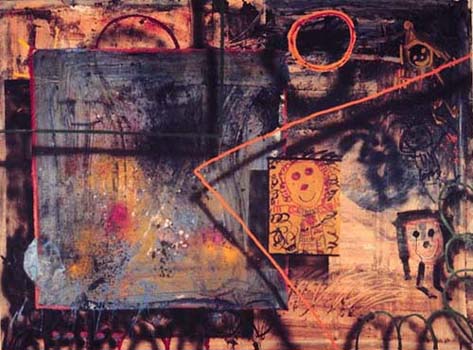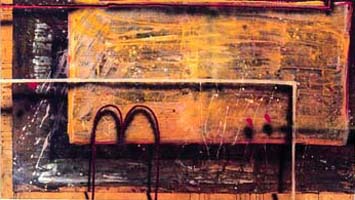

 Razor was a seventies gallery that evolved from a nineteen sixties artists' cooperative named "Spectrum". Jack Lembeck was asked to join and become president by Andrew Stasik, the president of the cooperative at the time and visiting professor at Yale. He was teaching printmaking while Gabor Peterdi was on sabbatical. Jack agreed because the president was not required to pay dues.
The first course of business was to hire Bill Hart as new the director because the current director wanted to resign and recommended Bill. Bill and Jack agreed that the gallery needed a new outlook and mission for the future. They decided the inaugural Razor exhibitions would be the United Graffiti Artists(u.g.a.) followed by Jack Lembeck (member president) and Judy Pfaff (artist guest). Lembeck resigned from the gallery when he could not convince the members to convert from "artist's co-op" to "non-profit organization" status even though he had verbal commitments for financial support. At the same time a significant number of serious professional galleries, both in SoHo and uptown, (including Pierre Matisse) were expressing an interest in exhibiting the recent work. (Be it a good career move or not - and against Ivan Karp's advice to join a prestigious uptown gallery) Jack chose to remain part of the gritty SoHo movement. He began by showing two new paintings at the new Warren Benedict Gallery. All the paintings from the Razor show were sold.
Razor was a seventies gallery that evolved from a nineteen sixties artists' cooperative named "Spectrum". Jack Lembeck was asked to join and become president by Andrew Stasik, the president of the cooperative at the time and visiting professor at Yale. He was teaching printmaking while Gabor Peterdi was on sabbatical. Jack agreed because the president was not required to pay dues.
The first course of business was to hire Bill Hart as new the director because the current director wanted to resign and recommended Bill. Bill and Jack agreed that the gallery needed a new outlook and mission for the future. They decided the inaugural Razor exhibitions would be the United Graffiti Artists(u.g.a.) followed by Jack Lembeck (member president) and Judy Pfaff (artist guest). Lembeck resigned from the gallery when he could not convince the members to convert from "artist's co-op" to "non-profit organization" status even though he had verbal commitments for financial support. At the same time a significant number of serious professional galleries, both in SoHo and uptown, (including Pierre Matisse) were expressing an interest in exhibiting the recent work. (Be it a good career move or not - and against Ivan Karp's advice to join a prestigious uptown gallery) Jack chose to remain part of the gritty SoHo movement. He began by showing two new paintings at the new Warren Benedict Gallery. All the paintings from the Razor show were sold.

Perhaps Flora Miller Biddle said it best in her book about the Whitney Museum;
“… Since Neolithic times, art has been a necessity for human beings, and artists have been the heart and soul of culture and society.
No one, not even the artists who make it, can control art.
These men and women are in touch with an ultimate mystery, with the essence of life’s meaning, and they bring it to us as a gift."
jack.lembeck@aya.yale.edu
United States
About the Artist |
Public Collections |
Brittle Star |
Windscape |
Windscape Works |
Landmind
Early Work |
Jeff's Vehicles |
Circles of Life |
Lembeck at Yale |
NYC Galleries |
Published continuously on the World Wide Web since 1996